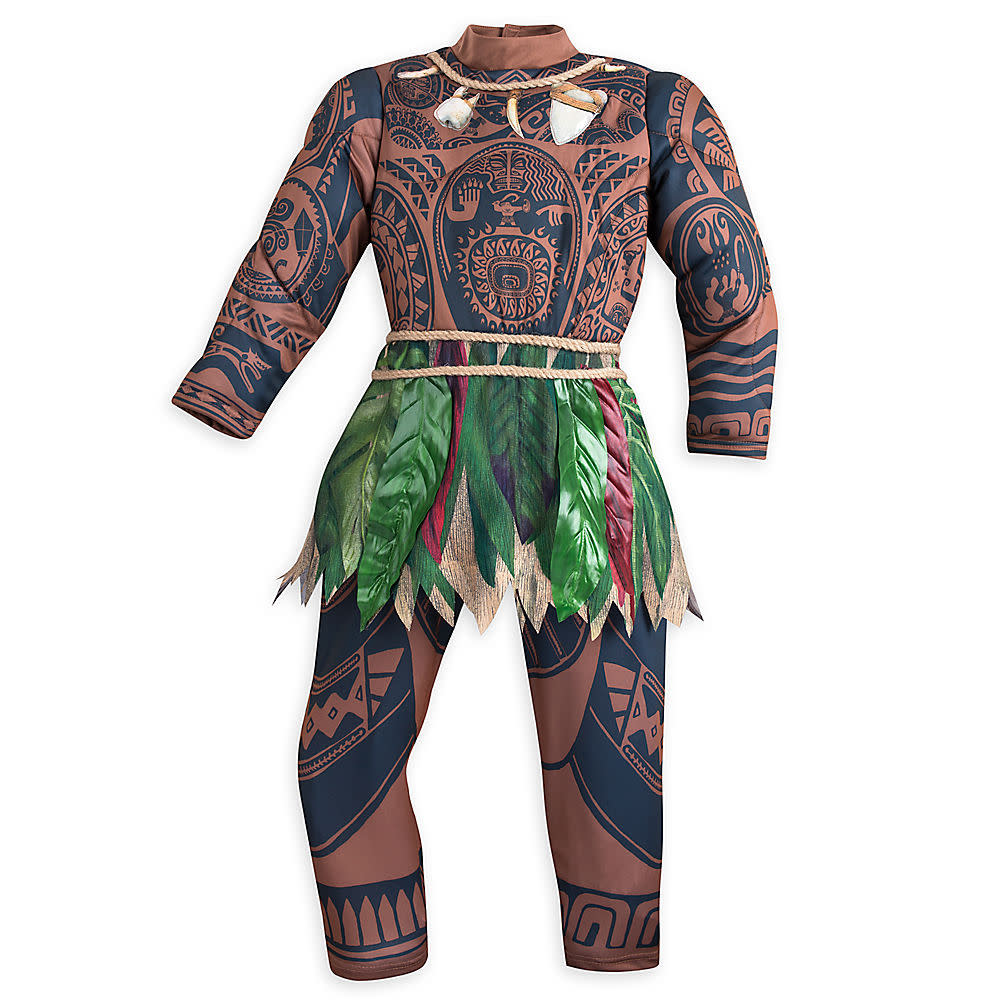Why People Say This Disney Costume Is Cultural Appropriation

You may have heard that there’s a new Disney princess coming and her name is Moana and basically everybody thinks she’s going to be totally awesome — and that Disney was getting early props for bringing some diversity to the princess landscape with its first Polynesian royal daughter.
But unfortunately, the folks at Disney seemed to miss the memo when it came to understanding the difference between celebrating diversity and cultural appropriation. That was evidenced by news that broke over the weekend about the costume of the movie’s character, Maui, being sold online through the Walt Disney Store, and how the costume is making a whole lot of people feel uncomfortable with the way that it basically encourages people to “wear” the skin of a given ethnicity and culture.
Fortunately, the Twitterverse was able to explain exactly why, to put it simply, “cultures aren’t costumes.”
https://t.co/VW1c2003JX Dear @Disney this is cultural appropriation. & my culture is not a costume.
— Keakeake (@8keakeake)
Many people are Rightfully upset about this new piece of #Moana merch. Cultures are NOT costumes. pic.twitter.com/J4R5W9ZLsy
— NPOC (@nerdypoc)
As excited as I am for #Moana, and as cool as Maui will be, other people’s skins are not costumes. @DisneyAnimation https://t.co/p9RsWt18o0
— jess banks (@ProfBanks)
This isn’t the first time that the issue of cultural appropriation has come up in the world of costumes in particular: Earlier this year, a group of students at Bowdoin College in Maine were criticized for wearing sombreros during a tequila-themed birthday party. And last fall, a Yale University staff member drew heavy backlash from the student body after she penned an email to the students in the college house she and her husband, a Yale professor, supervised; in it, she asked students to note which Halloween costumes they might see as offensive, and culturally appropriative, as an invitation for discussion with peers on what might be problematic about such choices.

And just last week, the designer Marc Jacobs faced heated criticism for not only sending white models down the NYFW runway in colorful dreadlocks, but then taking up the battlecry of “I don’t see color or race — I see people” when called out for his appropriative styling choices. Making things even worse, the designer then attempted to tell the black women who were offended that they, too, have historically appropriated white women’s standards of beauty by straightening and relaxing their own hair.
It was, to put it mildly, not the designer’s best look.
Because what choices, and responses — like that of Jacobs’ and the marketing masterminds at Disney — fail to realize is that for people of a given culture or ancestry, how they wear their hair or decorate their skin or put clothes on their bodies isn’t a casual fashion statement, but in fact a literal, visceral, unavoidable articulation of their own identity. For such people, these visual signifiers aren’t fun trends, but both who they are and a way of physically connecting with those who have come before them.
So some might think it’s silly for students to lose their housing over wearing a sombrero to a party — if it isn’t a visual component of your nationality, culture, or religion being made into a joking costume by others.
Because the truth of the matter is that it’s hard to assert that a culture is not being appropriated — that is, objectified in a way that dilutes its history, essence, and significance down into its most superficial elements that can than be adopted as costume by those not of that culture — except for those of the culture in question.
Marc Jacobs, a white, cisgender man, can’t tell black women that their own cultural beauty standards are not being appropriated, just as the very likely white, cisgender culture driving Disney marketing isn’t in a position to tell native Hawaiians if everything from the color of their skin to their traditional body tattoos being packaged and sold as a costume shouldn’t be thought of as offensive to them.
